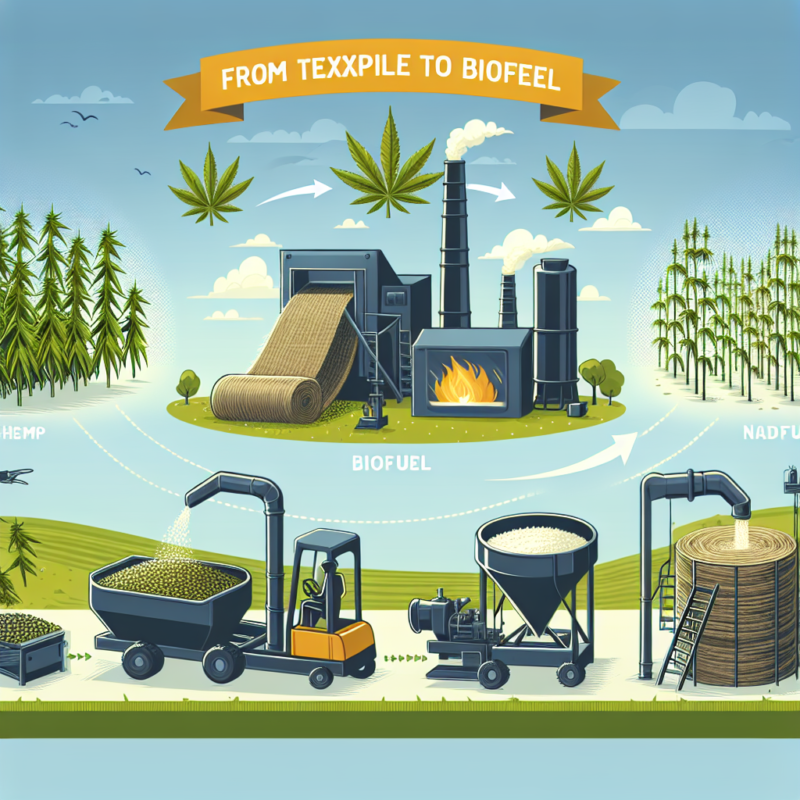From Textile to Biofuel: Unpacking the Incredible Uses of Hemp
Hemp, a versatile and ancient plant, is experiencing a renaissance in today’s eco-conscious world. Once demonized and relegated to the shadows of cannabis legislation, hemp is now being embraced for its multitude of uses. From textiles to biofuels, the cultivation of hemp offers sustainable solutions that address some of the most pressing environmental challenges we face. This article aims to explore the incredible applications of hemp and why it is worth our attention.
A Brief History of Hemp
Hemp (Cannabis sativa) has been cultivated for thousands of years, with evidence of its use dating back to ancient China around 2800 BC. Historically, hemp fibers were utilized for rope, textiles, and paper, while its seeds served as a nutritious food source. Nonetheless, with the rise of synthetic materials and strict anti-cannabis laws, hemp fell out of favor in many parts of the world. However, recent shifts in public perception and legislation have sparked renewed interest in this multifaceted plant.
Textile Innovations
One of the most established uses of hemp is in the textile industry. Hemp fibers are known for their strength, durability, and breathability, making them an ideal alternative to cotton and synthetic fabrics. The production of hemp textiles requires significantly less water and pesticides compared to conventional crops. In addition, hemp has natural antimicrobial properties, contributing to longer-lasting garments.
Fashion brands are beginning to tap into the eco-friendly potential of hemp. From everyday apparel to luxury garments, designers are finding innovative ways to incorporate hemp into their collections. Furthermore, advancements in technology, such as nanotechnology and sustainable processing, are enhancing the softness and feel of hemp fabrics, making them more appealing to consumers.
Construction Material
Hemp’s fibrous structure also lends itself to construction applications. Hempcrete—a mixture of hemp fibers, lime, and water—has emerged as a sustainable building material. Known for its insulation properties, hempcrete is both lightweight and carbon-negative. It absorbs CO2 during its curing process and contributes positively to the overall sustainability of construction projects.
In addition to hempcrete, hemp fibers can be used in composites for various building components, such as panels and insulation. With increasing awareness of the environmental impact of construction practices, hemp is being recognized as a viable solution for green building.
Nutritional Benefits
Hemp seeds are a powerhouse of nutrition, offering a balanced profile of essential fatty acids, complete proteins, and fiber. They can be consumed raw, hulled, or in the form of oil. Hemp oil is rich in omega-3 and omega-6 fatty acids, promoting heart health and supporting overall well-being.
Moreover, hemp seeds can be transformed into plant-based protein powders, making them a popular choice for athletes and health-conscious consumers. The versatility of hemp in the food industry extends to snacks, smoothies, and dairy alternatives, showcasing its potential to contribute to a healthier diet.
Environmental Remediation
Hemp is often lauded for its environmental benefits, particularly in soil health and remediation. The plant is known for its ability to absorb heavy metals and other contaminants from the soil, which not only cleans the land but also improves soil quality. This process, known as phytoremediation, can be especially valuable in areas affected by industrial pollution.
Additionally, hemp’s fast growth rate and deep root system help prevent soil erosion, increase nitrogen levels, and enhance biodiversity. As we face the repercussions of climate change, incorporating hemp into sustainable agricultural practices becomes increasingly critical.
Biofuels and Sustainable Energy
One of the most exciting applications of hemp is its potential in the biofuel industry. The seeds and stalks of the hemp plant can be processed to produce biodiesel and bioethanol. Biomass derived from hemp can serve as a sustainable alternative to fossil fuels, contributing to a greener energy landscape.
Hemp biodiesel has several advantages, including a lower carbon footprint and reduced greenhouse gas emissions. It can be used in existing diesel engines without modification, making it an attractive option for those looking to transition to renewable energy sources.
Conclusion
The resurgence of hemp represents a progressive shift towards sustainable practices across various industries. From textiles and construction to nutrition and biofuels, hemp showcases diverse applications that not only support eco-friendly initiatives but also offer economic opportunities. As legislation continues to evolve and public awareness grows, the remarkable potential of hemp may well be one of the keys to a more sustainable future. By embracing this innovative crop, we can pave the way for sustainable industries that benefit both people and the planet.

